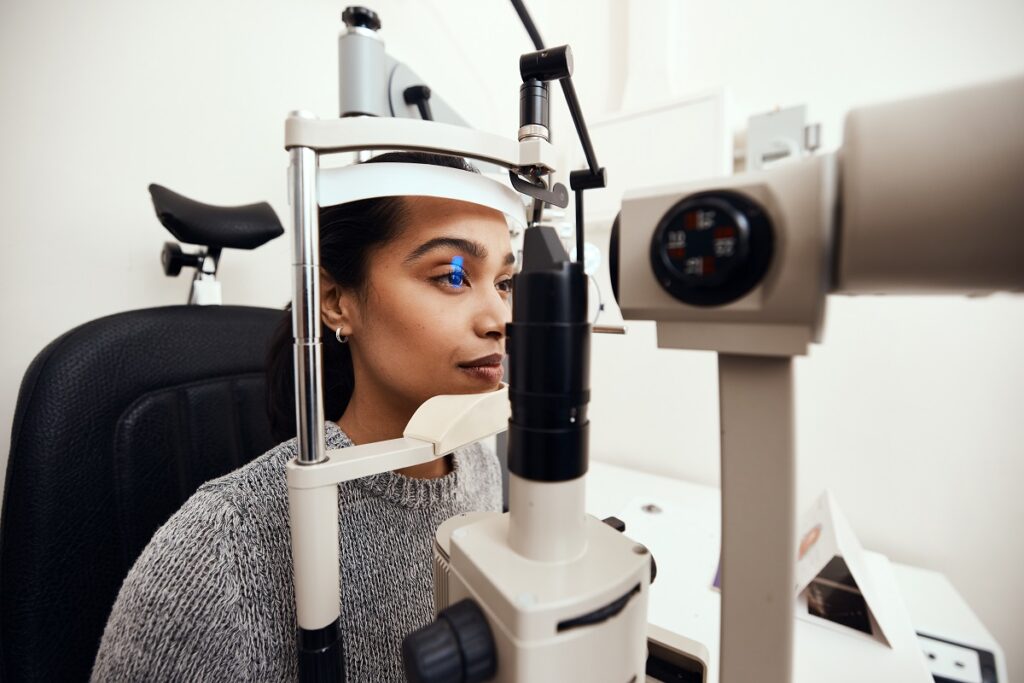Exploring the Most Recent Technical Improvements in Optometry and What They Mean for Optometrists
In the ever-evolving area of optometry, current technological advancements are reshaping exactly how practitioners come close to eye treatment. From the precision of Optical Coherence Tomography to the nuanced insights used by AI-driven analysis devices, these advancements are setting new standards in patient evaluation and therapy. Teleoptometry is positioned to redefine access, making sure that expertise transcends geographical limitations. As these improvements permeate the method, eye doctors are encountered with the challenge of welcoming these devices to enhance person outcomes. The question stays: how will these technical shifts redefine the functions and obligations within the career?
Advancements in Diagnostic Devices
Progressing the field of optometry, advancements in analysis devices have actually transformed the method eye care professionals assess and diagnose visual problems and ocular conditions. The previous decade has actually observed substantial technical innovations, allowing more thorough and accurate analyses.
Another trick advancement is the introduction of sophisticated corneal topography systems, which map the surface curvature of the cornea with accuracy. These tools are especially valuable for suitable contact lenses and detecting corneal problems. Moreover, electronic retinal imaging has actually changed conventional ophthalmoscopy, using in-depth, panoramic sights of the retina that help with thorough aesthetic evaluations.
The development of wavefront aberrometry has likewise been crucial, enabling the evaluation of refractive mistakes with unmatched accuracy (Eye Doctor). This innovation aids in tailoring corrective lenses and boosting medical end results for refractive surgical treatments. Jointly, these analysis advancements empower optometrists to supply exceptional individual treatment, guaranteeing very early treatment and tailored treatment techniques, eventually enhancing visual wellness end results
AI in Patient Management
Structure on the foundation of sophisticated diagnostic tools, the consolidation of artificial intelligence (AI) in patient monitoring stands for a transformative leap for optometry. AI systems are increasingly used to boost performance, precision, and customization in client care.
In addition, AI-driven systems facilitate streamlined individual interactions and administrative procedures. Automated scheduling, digital appointments, and customized follow-up plans not only enhance patient satisfaction however also maximize time management for experts. These systems can triage patients based upon the urgency of their problems, making certain that those in critical requirement receive timely interest.
Additionally, AI boosts decision-making by supplying optometrists with evidence-based recommendations and therapy paths. By integrating information from electronic health documents, AI tools supply understandings that notify clinical decisions, minimizing the risk of errors and improving patient results. As AI proceeds to evolve, its function in patient monitoring will likely expand, reshaping the landscape of optometric treatment.
Advances in Retinal Imaging
In the realm of optometry, retinal imaging has actually witnessed exceptional technological advancements that are improving diagnostic capabilities and individual care. Developments such as Optical Comprehensibility Tomography (OCT) and fundus digital photography have reinvented how eye doctors visualize and examine the retina.
Improved imaging methods like OCT angiography are further refining analysis precision. This non-invasive method maps blood flow in the retina, offering vital understandings right into vascular wellness without the requirement for color shots. Furthermore, adaptive optics modern technology is being incorporated into retinal imaging systems to fix ocular aberrations, supplying unprecedented photo quality. Such improvements help with the identification of min retinal changes that can represent disease progression.
In addition, developments in expert system are enhancing retinal imaging by making it possible for automated analysis of huge datasets. These systems aid optometrists in determining patterns indicative of pathology, therefore boosting diagnostic accuracy and performance. Jointly, these technologies are transforming retinal imaging into a keystone of contemporary eye care, enhancing results and broadening healing opportunities.
Teleoptometry's Expanding Duty
Teleoptometry is progressively ending up being an essential part of eye care, driven by developments in electronic communication and analysis tools. This is especially helpful in underserved and country locations where accessibility to specialized eye care is frequently minimal.
The combination of synthetic intelligence (AI) more enhances teleoptometry, enabling the analysis of aesthetic data and helping in the discovery of eye conditions such as glaucoma and diabetic person retinopathy. AI-powered algorithms can quickly translate complex imaging information, offering eye doctors with valuable insights that strengthen medical decision-making.
Additionally, teleoptometry sustains connection of care through seamless assimilation with electronic wellness documents (EHRs), allowing optometrists to maintain detailed client backgrounds. This guarantees that clients obtain regular and customized treatment even when speaking with different specialists.
Regardless of these advantages, difficulties remain, including making certain information security and managing client my blog assumptions. Nonetheless, teleoptometry stands for a significant stride in the direction of more accessible, effective, and patient-centered eye care. As innovation progresses, its function is poised to expand even more.

Future Trends in Eye Treatment
A myriad of ingenious trends is readied to reshape the future of eye care, driven by technological improvements and the developing demands of clients. One considerable fad is the combination of artificial intelligence (AI) in diagnostics, which assures to improve the precision and performance of eye examinations. AI formulas can evaluate vast quantities of information from retinal pictures, possibly detecting conditions like diabetic retinopathy and glaucoma earlier than Opticore Optometry traditional approaches.
Additionally, personalized medication is gaining traction in optometry, with hereditary testing notifying tailored therapy plans. This technique intends to maximize individual outcomes by tailoring interventions to individual hereditary accounts. Wearable modern technology, such as wise contact lenses, is additionally imminent, using real-time tracking of intraocular stress or glucose degrees, thus giving constant understandings into ocular and systemic wellness.
The adoption of increased fact (AR) and virtual reality (VR) in training and client education and learning is another emerging trend. These innovations supply immersive experiences that can enhance understanding and abilities both for optometrists and patients. As these patterns advance, optometrists have to stay abreast of technical improvements to provide sophisticated care, making sure better client end results and contentment in the dynamic landscape of eye care.
Conclusion

Collectively, these diagnostic advancements equip optometrists to deliver superior client treatment, guaranteeing very early treatment and customized therapy strategies, inevitably boosting aesthetic wellness end results.

As these technologies continue to progress, eye doctors must adapt and include them into method, inevitably optimizing process efficiency and raising the requirement of eye treatment supplied to clients.